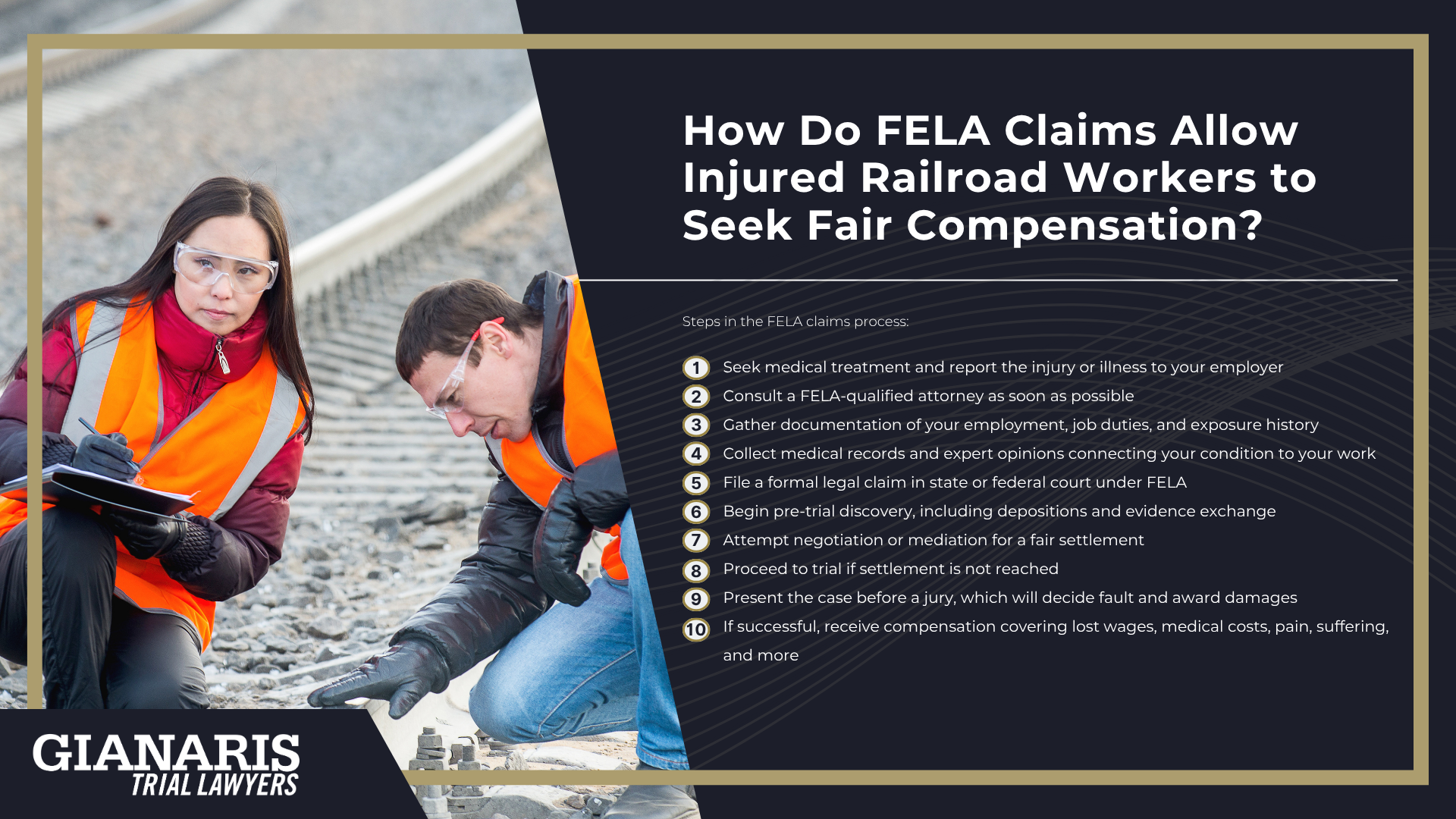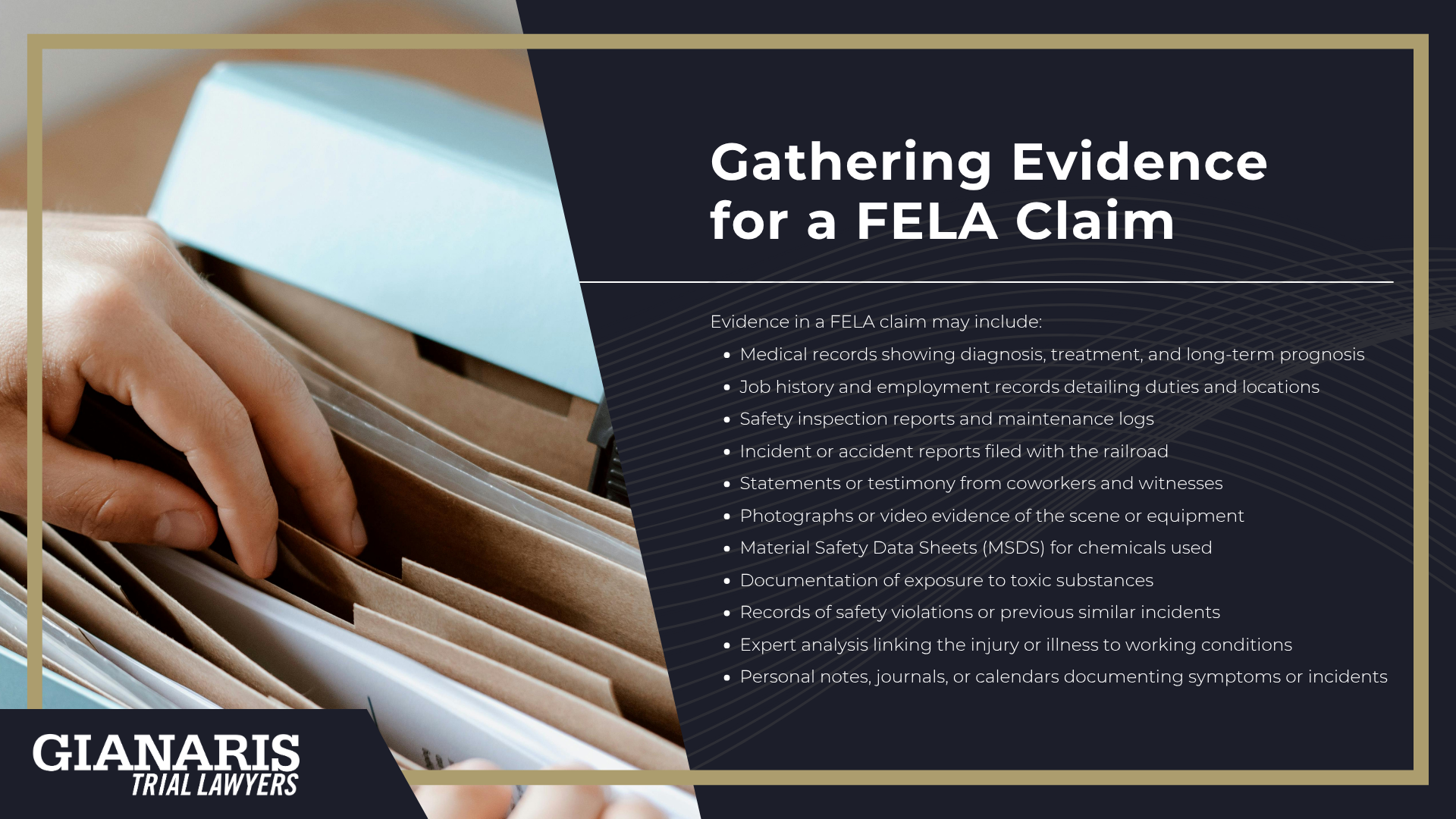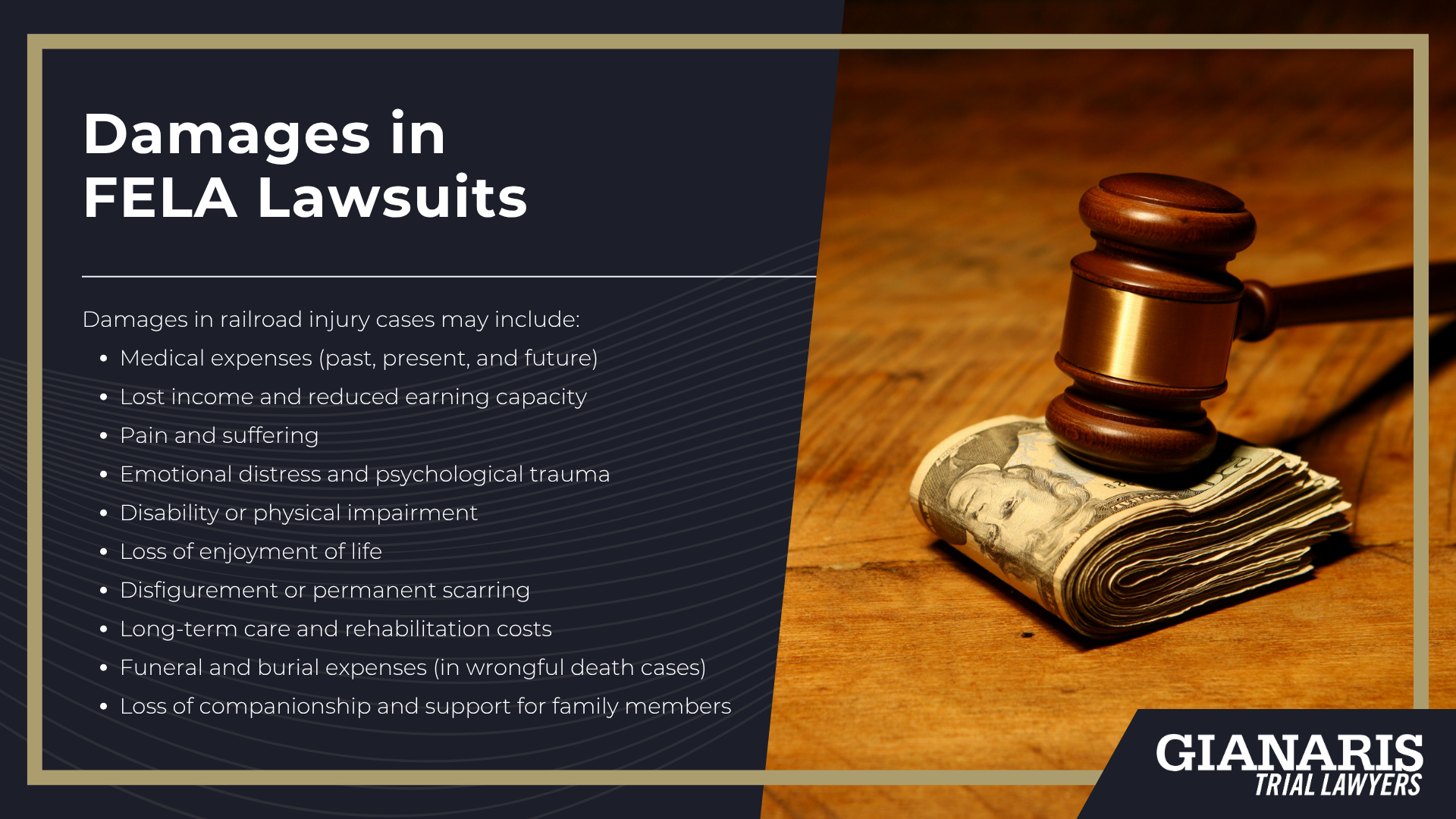Railroad conductors work at the center of train operations, balancing communication, coordination, and safety enforcement while frequently moving between railcars, tracks, and yards.
This role demands constant physical engagement in unpredictable environments, whether during active travel, switching operations, or responding to emergencies.
As a result, conductors face heightened risks for both immediate injuries from train accidents and long-term health complications from repeated exposure to hazardous substances.
Despite the importance of their position, workplace safety protocols are often inconsistently applied, placing conductors at unnecessary risk.
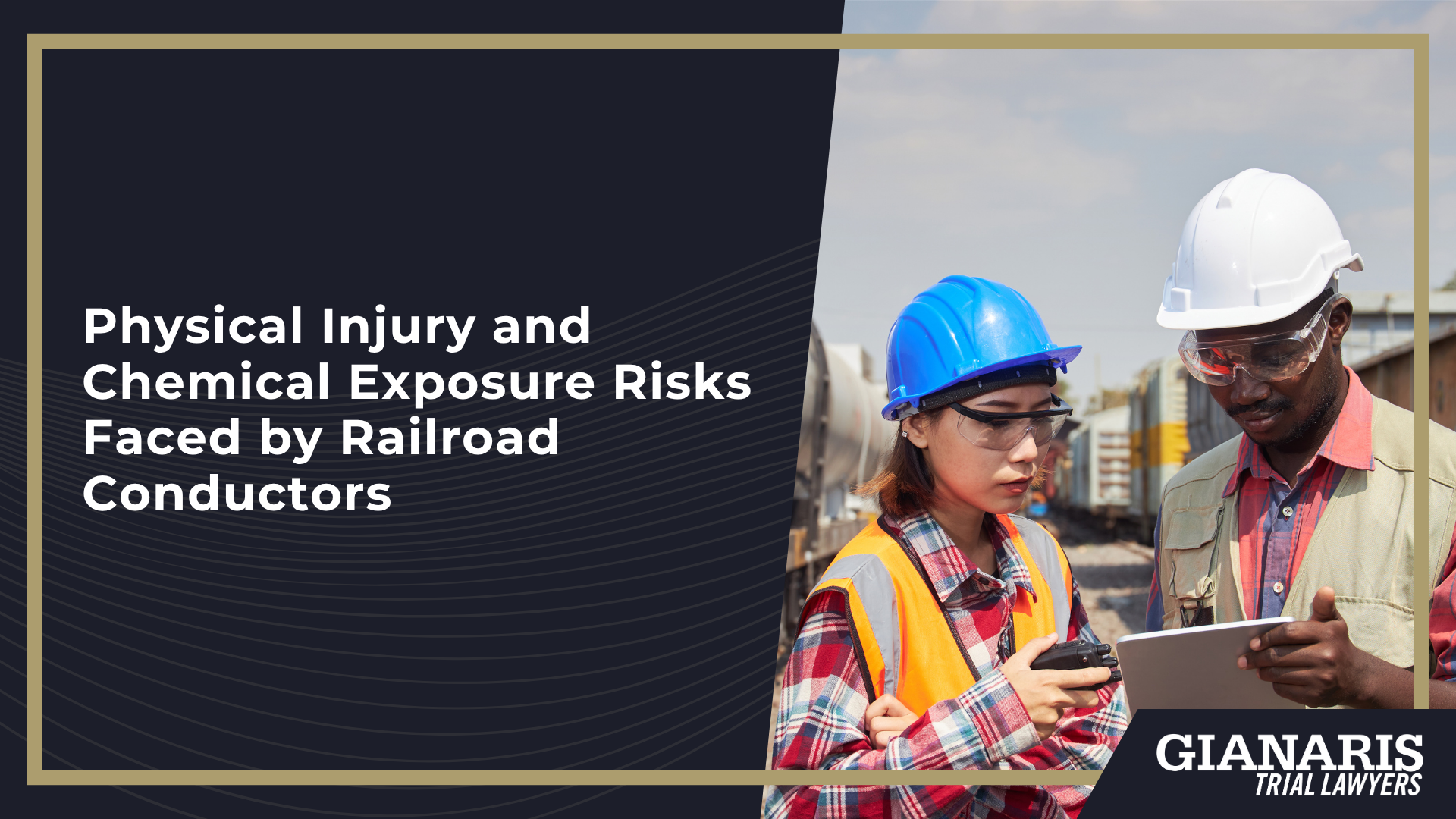
Exposure to diesel exhaust, solvents, and chemical residues in enclosed or poorly ventilated areas can lead to occupational illness, including respiratory disease and certain cancers.
Many affected workers only begin to understand the toll of their railroad work years after the damage is done, sometimes after they’ve already retired.
Retired railroad workers may be eligible to file railroad cancer claims or pursue injury-related compensation even after leaving the job.
At Gianaris Trial Lawyers, we recognize the specific risks faced by conductors in the field and onboard, and we work to hold negligent railroads accountable.
If you’ve suffered harm while working as a conductor, you may have the right to pursue compensation through a FELA claim.
Physical Injury Risks for Railroad Conductors
Railroad conductors face a constant risk of serious physical harm due to the dynamic and often dangerous nature of their job.
Whether climbing between railcars, directing switching operations, or working in busy rail yards, conductors are frequently exposed to hazardous conditions that demand constant awareness and physical exertion.
These risks are only heightened by employer negligence, such as insufficient staffing, faulty equipment, or lack of proper training.
While safety protocols are intended to protect workers, many railroads fail to enforce them consistently, leaving injured employees to deal with the consequences.
Conductors also experience an increased risk of traumatic injury due to their frequent proximity to moving trains and railcar mechanisms.
In some cases, these incidents have led to permanent disability or even railroad deaths, all of which could have been prevented through stronger oversight.
At Gianaris Trial Lawyers, we understand the day-to-day hazards conductors face and how these injuries can permanently affect their medical history and future well-being.
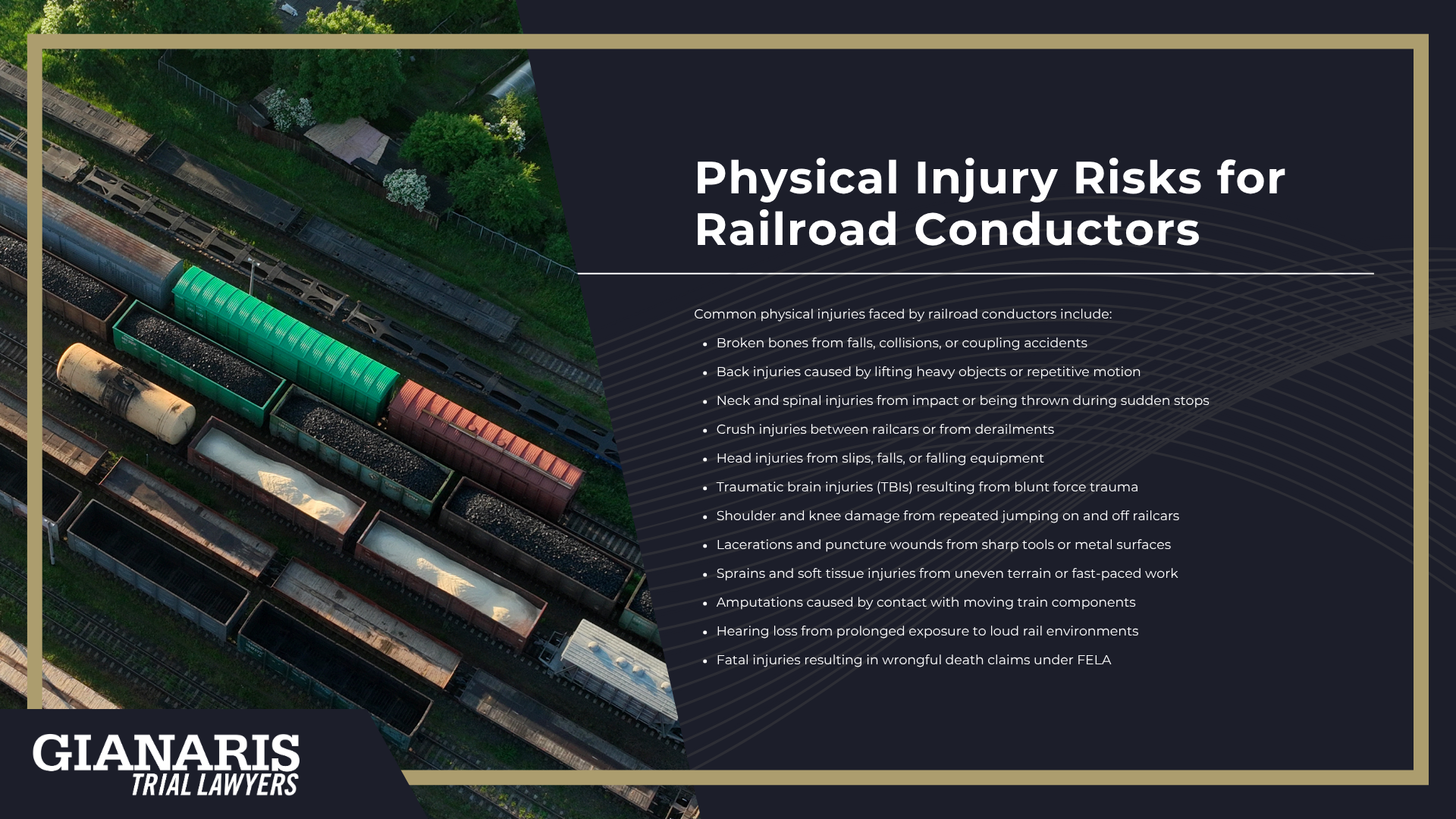
Common physical injuries faced by railroad conductors include:
- Broken bones from falls, collisions, or coupling accidents
- Back injuries caused by lifting heavy objects or repetitive motion
- Neck and spinal injuries from impact or being thrown during sudden stops
- Crush injuries between railcars or from derailments
- Head injuries from slips, falls, or falling equipment
- Traumatic brain injuries (TBIs) resulting from blunt force trauma
- Shoulder and knee damage from repeated jumping on and off railcars
- Lacerations and puncture wounds from sharp tools or metal surfaces
- Sprains and soft tissue injuries from uneven terrain or fast-paced work
- Amputations caused by contact with moving train components
- Hearing loss from prolonged exposure to loud rail environments
- Fatal injuries resulting in wrongful death claims under FELA
These injuries are not uncommon, and when caused by negligence, conductors and their families may be entitled to financial recovery.
Chemical Exposure Risks for Railroad Conductors
Railroad conductors are often exposed to harmful substances during the course of their daily duties—especially when working around idling locomotives, during track maintenance, or while inspecting railcars carrying hazardous materials.
Over time, repeated occupational exposure to diesel fumes, cleaning agents, and industrial chemicals can lead to the development of serious illnesses that aren’t always immediately recognized.
These workplace exposures may occur without proper ventilation or protective equipment, putting conductors at risk even when they aren’t handling the substances directly.
From asbestos insulation in older equipment to crude oil or chemical residue from leaking tank cars, conductors often work in environments that threaten their long-term health.
Many of these exposures increase the risk of lung diseases, blood disorders, and conditions that shorten life expectancy.
Conductors who have been injured on the job due to toxic exposure may have grounds to pursue compensation under FELA, especially if the railroad failed to provide warnings or adequate protection.
At Gianaris Trial Lawyers, we help conductors connect years of exposure to a diagnosis and fight to hold negligent railroads accountable.
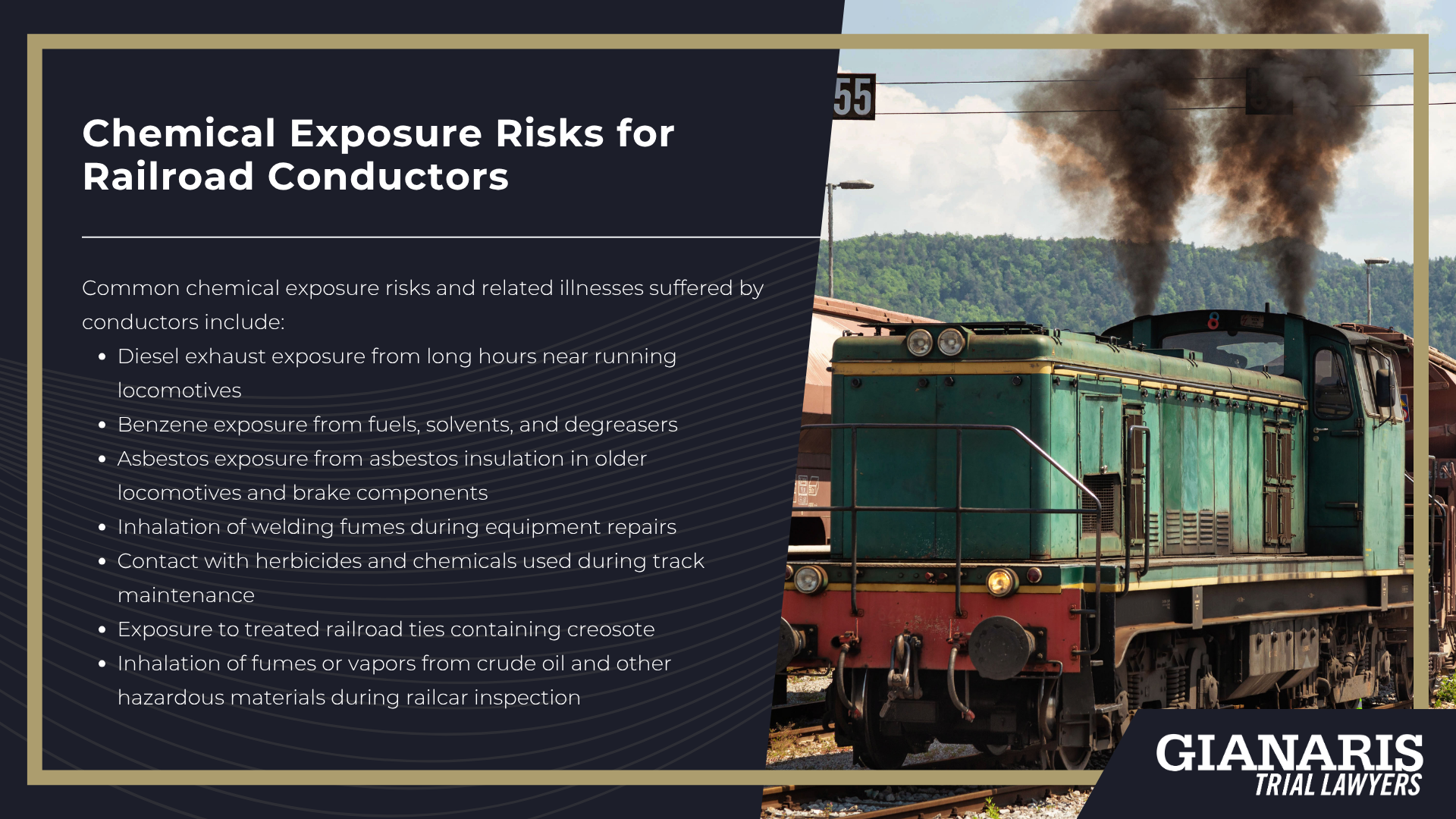
Common chemical exposure risks and related illnesses suffered by conductors include:
- Diesel exhaust exposure from long hours near running locomotives — linked to lung cancer, COPD, and chronic bronchitis
- Benzene exposure from fuels, solvents, and degreasers — associated with leukemia, aplastic anemia, and other blood cancers
- Asbestos exposure from asbestos insulation in older locomotives and brake components — causes mesothelioma, asbestosis, and lung scarring
- Inhalation of welding fumes during equipment repairs — linked to respiratory irritation and neurological effects
- Contact with herbicides and chemicals used during track maintenance — associated with non-Hodgkin’s lymphoma and skin disorders
- Exposure to treated railroad ties containing creosote — connected to skin cancer, chemical burns, and respiratory damage
- Inhalation of fumes or vapors from crude oil and other hazardous materials during railcar inspection — linked to organ damage and toxic inhalation injuries
Even years after leaving the job, conductors suffering from these illnesses may still have a valid FELA claim if the illness can be traced to railroad-related exposures.


